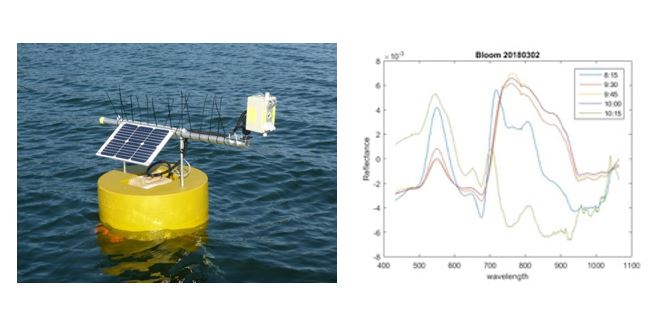The challenge
Out of control Algal blooms in NSW and VIC
Once an algal bloom occurs, very little can be done to stop it. An algal bloom is a rapid increase or accumulation in the population of algae in freshwater or marine water systems and is often recognised by the discolouration in the water from their pigments.Frequent testing of algal levels can help with decision-making. Alternative water supplies for stock and domestic uses may need to be found, and flushing the water body by adjusting river flows may disperse blooms and break up stratification. However, these options may not be possible, or helpful, depending on water availability or the characteristics of a bloom.
HydraSpectra is an algal bloom early warning sensor which is used in a wide range of water bodies across New South Wales and Victoria. It is designed to complement in-situ monitoring programs. Deployed as a network of sensors, and coupled with satellite imaging technologies, the instrument allows a state-wide overview of potential bloom issues, as well as the exploration of individual water body dynamics.
Our response
Monitoring water quality of water bodies
HydraSpectra is a low-cost optical system for field-deployed water quality monitoring of water bodies based on spectral reflectance developed by the CSIRO. Spectral reflectance is a measure of how much energy (as a percent) a surface reflects at a specific wavelength. Many surfaces reflect different amounts of energy in different portions of the spectrum. Algal blooms are distinct based on the high concentrations of photosynthetic pigments they contain.
Fig 1 shows HydraSpectra deployed on a buoy in the Penrith Lakes complex, Sydney. Fig 2 shows the spectra returned from another deployment at the Melbourne Water Treatment Ponds where it can be seen that the reflectance changes, notably over the longer wavelengths as a bloom disperses from a scum at the water surface to a more mixed situation over the course of a morning.
The results
Sensors capture data to provide water quality parameters
HydraSpectra sensors capture data that can be used to estimate chlorophyll and suspended sediment concentrations with accuracy, similar to other research spectroscopic systems.It uses the Senaps framework to acquire raw images from the sensors, run image processing analytics on the images to derive spectral reflectance. In-house developed algorithms are then applied to the workflow, to covert the calibrated spectral reflectance spectra into water quality information such as the concentration of photosynthetic pigments, indicative of the presence of an algal bloom. This information is then displayed in easy-to-interpret dashboards showing algal bloom alert status for the water bodies of interest to our customers.
The sensors and Senaps provide a continuously monitored, low maintenance, sensor network affording early warning of developing bloom and other water quality issues.
HydraSpectra is being considered as underlying technology in CSIRO's AquaWatch Mission, a tier-two CSIRO mission which proposes a solution to water quality monitoring across Australia using specifically designed satellite missions supported by in-situ sensor and decision support system.
